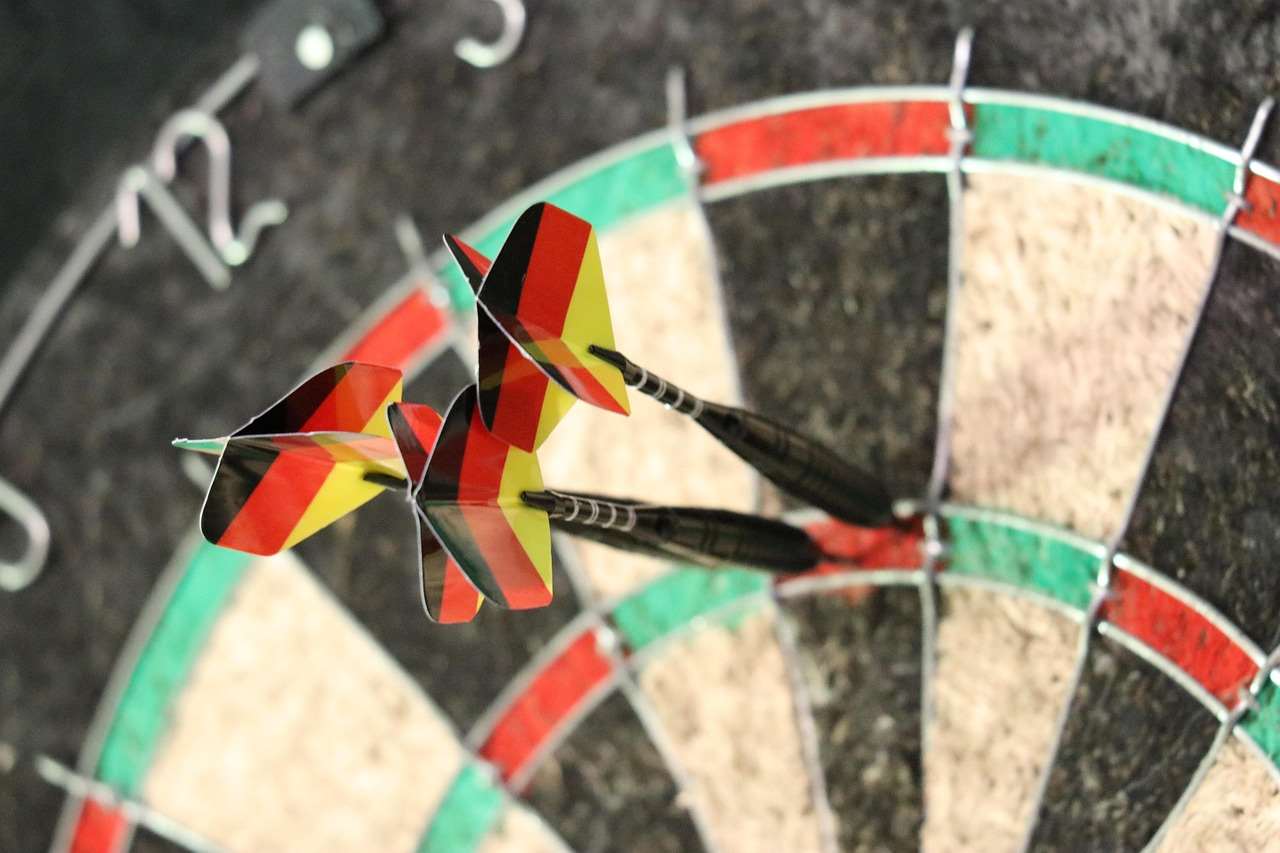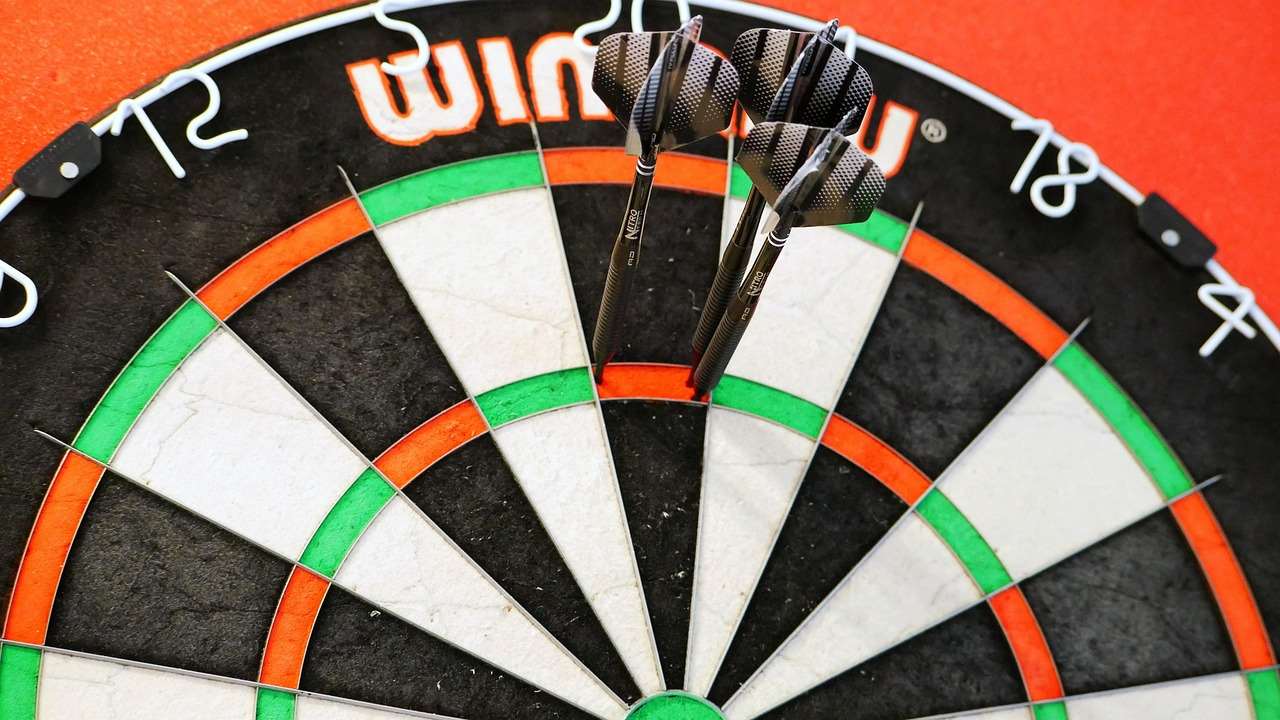Unlocking your dart-playing potential hinges on understanding your performance, and stat analysis for practice play is the key. By tracking and analyzing key metrics during practice, you can identify weaknesses, refine your technique, and accelerate your progress. This article will guide you through the essentials of statistical tracking, helping you create a structured practice routine that delivers real results.
⚠️ Still Using Pen & Paper (or a Chalkboard)?! ⚠️
Step into the future! The Dart Counter App handles all the scoring, suggests checkouts, and tracks your stats automatically. It's easier than you think!
Try the Smart Dart Counter App FREE!Ready for an upgrade? Click above!
Why Is Stat Analysis For Practice Play Essential?
Many dart players fall into the trap of simply throwing darts without a clear goal or method. While casual practice is enjoyable, it’s not the most efficient way to improve. Stat analysis for practice play injects a dose of objectivity into your routine. It allows you to move beyond gut feelings and base your training decisions on concrete data.
Here are some key benefits:
- Identifying Weaknesses: Stats reveal areas where you consistently struggle, allowing you to focus your practice efforts where they’re needed most.
- Tracking Progress: Monitoring your stats over time provides tangible evidence of improvement, boosting motivation and reinforcing positive changes.
- Optimizing Strategy: Data can inform your in-game strategy, helping you make smarter decisions about target selection and risk management.
- Improving Consistency: By analyzing patterns in your throws, you can identify and correct inconsistencies in your technique, leading to more reliable performance.

Essential Stats To Track During Practice
Not all stats are created equal. Focus on metrics that provide the most meaningful insights into your performance. Here are some essential stats to track during your practice sessions:
Scoring Stats
- Average Score Per Dart (SPD): This is arguably the most important overall metric, providing a general measure of your scoring ability. Calculate it by dividing your total score by the number of darts thrown.
- Three-Dart Average (3DA): A more specific measure of your scoring prowess, calculated by averaging your scores over multiple three-dart rounds.
- Checkout Percentage: This reflects your ability to close out legs effectively. Track the percentage of times you successfully checkout from a given score.
- High Scores (180s, 140+): While not as crucial as averages, tracking these can provide insight into your ability to hit high-scoring combinations.
Accuracy Stats
- Bullseye Percentage: Measures how often you hit the bullseye. This is particularly relevant if you incorporate bullseye finishes into your strategy.
- Treble 20 Percentage: A key indicator of your scoring potential. Track how often you hit the treble 20, the highest-scoring single segment on the board.
- Doubles Percentage: Essential for finishing legs. Track your accuracy on doubles, focusing on the doubles you commonly use for checkouts. Consider reading up on Darts Culture And Community Guide.
Tools and Methods for Stat Tracking
You have several options for tracking your stats, ranging from simple pen-and-paper methods to sophisticated software applications.
Manual Tracking
The simplest approach involves using a notebook or spreadsheet to record your scores and calculate your stats manually. This method is cost-effective and doesn’t require any special equipment, but it can be time-consuming and prone to errors.
Dart Scoring Apps
Numerous dart scoring apps are available for smartphones and tablets. These apps typically provide a user-friendly interface for recording scores, calculating stats automatically, and tracking your progress over time. Some apps also offer advanced features such as practice routines and performance analysis tools.
Dedicated Dart Boards with Stat Tracking
Some modern electronic dartboards come equipped with built-in stat tracking capabilities. These boards automatically record your scores and calculate various stats, providing real-time feedback on your performance. This can be a convenient option for serious players who want to track their stats without the hassle of manual recording.

Creating a Structured Practice Routine With Stat Analysis
Stat analysis for practice play is most effective when integrated into a structured practice routine. Here’s a step-by-step guide to creating a routine that maximizes your improvement:
1. Identify Your Weaknesses
Start by analyzing your existing stats (if you have them) or by playing a few practice games and tracking your performance. Identify the areas where you consistently struggle. For example, are you struggling with doubles, scoring consistently, or hitting the bullseye?
2. Set Specific Goals
Once you’ve identified your weaknesses, set specific, measurable, achievable, relevant, and time-bound (SMART) goals for improvement. For example, “Increase my doubles percentage from 20% to 30% within one month.”
3. Design Targeted Practice Drills
Develop practice drills that specifically target your weaknesses. For example, if you’re struggling with doubles, dedicate a portion of your practice time to throwing at specific doubles segments. If you want to learn more about organizing dart games, consider researching Organizing Local Darts League.
4. Track Your Stats During Practice
During your practice sessions, meticulously track your stats for each drill. This will provide valuable feedback on your progress and help you identify areas where you need to adjust your approach.
5. Analyze Your Data and Adjust Your Routine
Regularly analyze the data you’ve collected and adjust your practice routine accordingly. If you’re not seeing the desired improvement in a particular area, experiment with different drills or techniques. If you are seeing improvement, continue to refine your approach to maximize your progress.

Advanced Stat Analysis Techniques
Once you’ve mastered the basics of stat analysis for practice play, you can delve into more advanced techniques to gain even deeper insights into your performance.
Trend Analysis
Track your stats over extended periods to identify long-term trends. This can reveal patterns in your performance that might not be apparent from short-term analysis. For example, you might notice that your scoring average tends to decline during certain times of the day or week.
Correlation Analysis
Explore the relationships between different stats to identify factors that might be influencing your performance. For example, you might discover a correlation between your sleep quality and your accuracy on doubles. These insights are crucial when thinking about Darts League Management Tips.
Variance Analysis
Calculate the variance in your stats to measure the consistency of your performance. A high variance indicates that your performance is erratic, while a low variance suggests that you’re more consistent.
Leveraging Stat Analysis For Competitive Play
The benefits of stat analysis for practice play extend far beyond the practice board. By understanding your strengths and weaknesses, you can develop a more effective strategy for competitive play.
Target Selection
Stat analysis can help you make smarter decisions about target selection during matches. For example, if your treble 20 percentage is relatively low, you might consider aiming for a different scoring target that you’re more comfortable with.
Checkout Strategies
Your checkout stats can inform your finishing strategies. If you have a high doubles percentage on a particular double, you might prioritize checkouts that involve that double.
Risk Management
By understanding your variance, you can better assess the risk involved in different plays. If your performance is highly erratic, you might opt for a more conservative approach, while if you’re feeling confident, you might take more risks.

Common Mistakes to Avoid When Using Stat Analysis
While stat analysis for practice play can be a powerful tool, it’s important to avoid common mistakes that can undermine its effectiveness.
- Focusing on the Wrong Stats: Don’t get bogged down in tracking irrelevant metrics. Focus on the stats that provide the most meaningful insights into your performance.
- Ignoring Context: Stats should always be interpreted within the context of your overall skill level and goals. A high average score might be impressive for a beginner but less so for an experienced player.
- Overanalyzing Data: Avoid getting paralyzed by analysis. Use your stats to inform your decisions, but don’t let them dictate every aspect of your game.
- Inconsistent Data Collection: Ensure you are tracking your data consistently across all practice sessions. Changes in your method can skew results.
Joining a How To Start A Darts League could give you more chances to use your stat analysis in a real game.

Beyond the Numbers: Integrating Stat Analysis with Intuition
While stat analysis for practice play provides valuable data-driven insights, it’s important to remember that darts is also a game of feel and intuition. Don’t rely solely on your stats to make decisions. Integrate your analytical findings with your own sense of the game, your opponent’s tendencies, and the overall flow of the match.
Finding the right balance between data and intuition is crucial for maximizing your performance. Use your stats as a guide, but trust your instincts when they tell you something different. The best dart players are those who can combine analytical thinking with a natural feel for the game.
Conclusion
Stat analysis for practice play is a powerful tool for improving your dart game. By tracking key metrics, identifying weaknesses, and developing targeted practice routines, you can unlock your full potential and achieve your darting goals. Remember to focus on relevant stats, interpret your data within context, and integrate your findings with your intuition. Start tracking your stats today and watch your game soar! Now, take what you’ve learned and apply it to your game – track your stats, analyze your performance, and refine your technique. Your journey to darting mastery begins now!
Hi, I’m Dieter, and I created Dartcounter (Dartcounterapp.com). My motivation wasn’t being a darts expert – quite the opposite! When I first started playing, I loved the game but found keeping accurate scores and tracking stats difficult and distracting.
I figured I couldn’t be the only one struggling with this. So, I decided to build a solution: an easy-to-use application that everyone, no matter their experience level, could use to manage scoring effortlessly.
My goal for Dartcounter was simple: let the app handle the numbers – the scoring, the averages, the stats, even checkout suggestions – so players could focus purely on their throw and enjoying the game. It began as a way to solve my own beginner’s problem, and I’m thrilled it has grown into a helpful tool for the wider darts community.